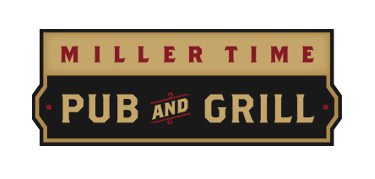
Slugger John Jaha was a big part of the 1996 Brewers’ historic offensive output.
At the mid-way point in the 2017 season, the Brewers held first place with a 42-39 record. This marks the fifth time they have been in first place at the midway point of the season and, oddly enough, all five of those season have occurred since 2007. A big reason for the Brewers success has been their high-powered offense. They tallied 391 runs in the first half, good enough for the seventh-best total in baseball, and slugged an NL-leading 121 homers. This puts them on pace for their best offensive output since 2007 and on pace to top the single-season franchise home run record set the same year.
The list of the highest-scoring Brewers teams includes some of the best in franchise history. The pennant-winning 1982 club scored 891 runs, the highest total of any Major League team between 1952 and 1986. The 1987 “team streak” club tallied 862 runs, second in the league to the Detroit Tigers. During their first streak of contending teams, the Brewers topped 800 runs in 1978, ’79, and ’80 – the only team in baseball to do so. But the highest-scoring year in team history will surprise many fans and stands out as a bit of an anomaly among similarly-potent teams: the Phil Garner-led 1996 Brewers.
There was no doubt in the mid-1990s that the Brewers could score runs. In the strike-shortened 1995 season, the team averaged 5.14 runs per game, third-best in team history. But their opponents scored at roughly the same pace, averaging 5.19 runs per game – the worst runs allowed mark ever for a Brewers team. During the offseason, the Crew made a minor splash by signing free agent pitcher Ben McDonald to an $11 million contract. Even with the loss of outfielder Darryl Hamilton, the club retained a decent core of talent, including John Jaha, Jeff Cirillo, Greg Vaughn and Kevin Seitzer. A seven-game winning streak in mid-April briefly put the team in first place but, even with the help from McDonald, the Brewers faded and lingered around the .500 mark for most of the season, well behind the front-running Cleveland Indians and always a handful of games out of the wild card spot. A 14-11 finish to the season put them at 80-82 on the year, their best record between 1993 and 2004.
![]() Stay on top of the news of the day
Stay on top of the news of the day
Subscribe to our free, daily e-newsletter to get Milwaukee's latest local news, restaurants, music, arts and entertainment and events delivered right to your inbox every weekday, plus a bonus Week in Review email on Saturdays.
The 894 runs the Brewers scored in 1996 was the 11th highest total in a single season for any team since 1950 and is a mark only two teams have topped in the past decade. Even in the homer-happy ’90s, the ’96 team was a fairly well balanced attack. Finished in the middle of league rankings in home runs, they registered the highest walk total and OPS in team history. The Crew was led by steady hitters like Jaha, who slashed .300/.398/.543; Cirillo, who led the team with a .325 average; and Greg Vaughn, who slugged 31 homers in just over 100 games before being traded.
Pitching, however, kept the ’96 Crew from being anything greater than a mediocre club. They allowed 899 runs, still a team record and over 80 runs more than the team had ever allowed in a season before. While the pitching problems relegated the ‘96 team to a minor chapter in franchise history, they also put it into a rather unique historical class. The 1996 Brewers were just the fourth team in history to score so many runs and finish the season with a losing record – two of the other teams being the 1929 and 1930 Phillies, who played in the notoriously batter-friendly Baker Bowl. Since 1996, only four more teams have scored as often and lost as often, two of those being Colorado Rockies teams, whose home park was also a stat-slanting launching pad.
Scoring nearly 900 runs in a season is a very difficult thing to do. Scoring nearly 900 runs and giving them all back with a lousy pitching staff is an almost impossible feat. In 1996, the Brewers managed the almost impossible, giving the club a dubious distinction in baseball history.
